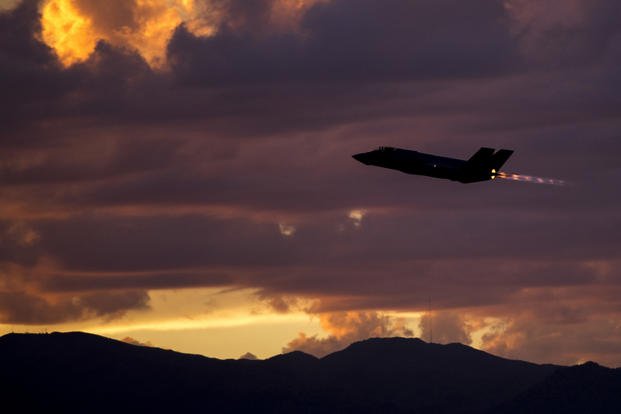The U.S. Air Force is taking its mission to connect multiple platforms and battlefields to new heights -- literally.
The service's stealthiest jets and a super-secret space plane could one day share information.
That's the concept Air Force Chief of Staff Gen. David Goldfein teased this week, saying he's interested in seeing how the F-35 Joint Strike Fighter, F-22 Raptor and X-37 space plane might talk to each other.
Audience members at an Air Force Association breakfast Wednesday at first thought the chief meant something a little more down to Earth, either the X-47B unmanned combat aerial vehicle (UCAV) or even the Kratos XQ-58 Valkyrie drone, which the service is experimenting with for its Loyal Wingman program.
But it is indeed the super secret X-37B space plane, a service official said following Goldfein's remarks.
Related: In First, Air Force Will Send Secure Data Between an F-22 and F-35
"When you look at something like an X-37 or an F-35 or F-22 … as we refine these connections and we show that level of interoperability that is resilient, redundant and reliable, we will then be able to develop what that means in terms of creating an effect against the adversary," said Brig. Gen. David Kumashiro, director of joint force integration for the Air Force's Deputy Chief of Staff for Strategy, Integration and Requirements Office. He spoke at the DefenseOne Outlook event in Washington, D.C., on Thursday.
According to the service, the X-37B explores the practicalities and risks of "reusable space vehicle technologies." The low-earth orbit vehicle completed its fifth, record-breaking unmanned space mission last month.
Connecting the X-37B to the fighters would show "the ability to operate from all domains," Kumashiro said. That includes information sharing during wartime missions.
He demurred when asked what sorts of X-37 payloads or sensors the F-22 and F-35 could leverage during such a demonstration.
Preston Dunlap, the Air Force's chief architect serving the Office of the Assistant Secretary for Acquisition, Technology and Logistics, announced at the DefenseOne event that next month the service will test how the F-35 and F-22 can exchange battlespace information after years of incompatibility.
These efforts are part of the Defense Department's larger goal to get information to soldiers, sailors, airmen and Marines more quickly and increase situational awareness for all users.
The Air Force is also looking to debut something called "Omnia One," a unifying interface that shows operators not only where aircraft may be flying -- much like a combined air operations center -- but also where ships and other equipment are.
Plugging into something from afar isn't a new concept, Kumashiro said, explaining it's much like an operator sitting in a ground station in Nevada controlling an MQ-9 Reaper in the Middle East.
But the DoD needs to expand its ability to transfer relevant information quickly in a geographically agnostic way, Dunlap said.
"The idea is … [to see] a picture for space and air and land surface and cyber," he said, comparing the application to something much like FlightAware or Uber. "You can see a picture, you can click on the ship, see where it's been, where it's traveling, what's on the ship ... and we need to be able to get that to our warfighters in a way that's accessible" and flexible.
Dunlap said the service hopes to incorporate other tools into the Omnia One interface next month.
The initiatives give the Air Force a chance to modernize, he added.
"We want people to make smart choices regardless of where they are," Dunlap said.
-- Oriana Pawlyk can be reached at oriana.pawlyk@military.com. Follow her on Twitter at @Oriana0214.
Read more: Force-Wide Review Could Result in a 'Radically Different' Marine Corps
Don't Miss a Single Military.com Story
To read the full article and get exclusive benefits, sign up today.
It’s FREE
Why am I seeing this? Visit our FAQs














